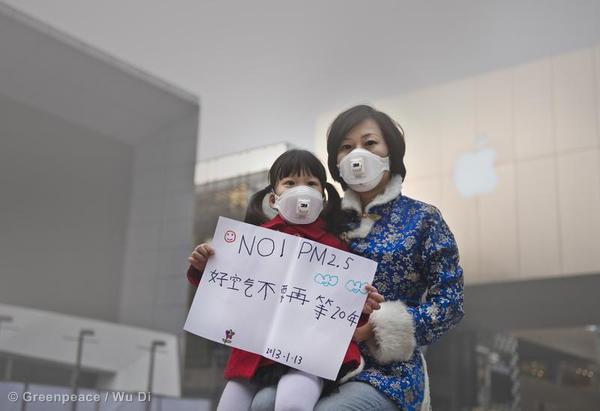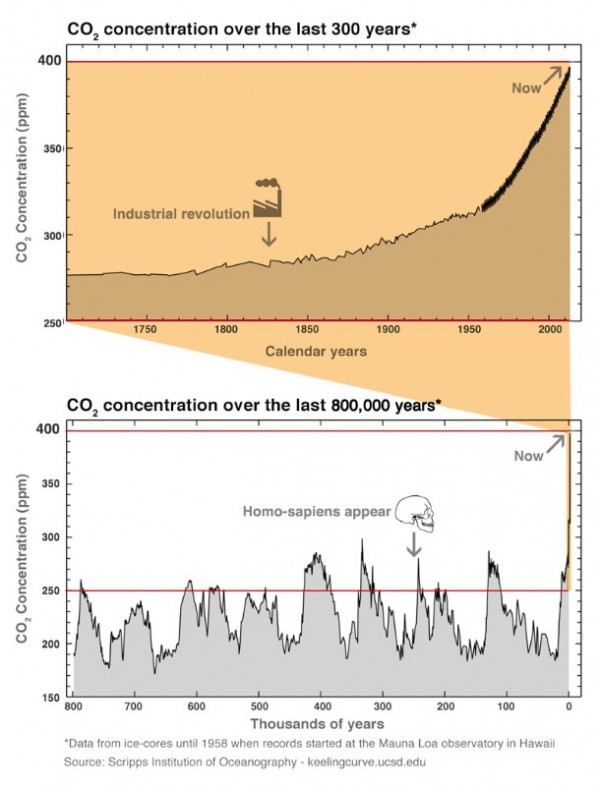The levels of the carbon dioxide in the atmospherehas reached 400 parts per millionfor the first time in human history. The last time levels were this high global average temperatures eventually reached 3 or 4C higher than now, the polar regions were up to 10C warmer than today the Greenland and Antarctic ice sheets were smaller and Sea level ranged between five and 40 meters (16 to 131 feet) higher than today.
There are two reasons to be seriously worried by this year’s CO2measurements from the Mauna Loa Observatory in Hawaii. We are hitting the symbolic limit of 400 parts per million, showing how far we have come from the pre-industrial levels of 280 and the relative safety of 350. Even more alarming, though, is the fact that this year the levels have risen faster year-on-year than ever before during the time that measurements have been made, breaking the previous record from more than a decade ago. In other words, not only are we speeding into climatic territory that humankind has never experienced before, we are still speeding up.
The planet is poised to reach the 1,000 ppm level in only 100 years if emissions continue to rise at their present level whereas an increase of just 10 parts per million might have taken 1,000 years or more during ancient climate change events. We are altering the conditions within which civilisation developed, at a rate that will seriously challenge our capacity to adapt and change.
The people with their foot on the gas pedal are the dirty fuel and logging industries, with the coal industry alone responsible for two thirds of recent frantic emission growth. And they have no intention of slowing down. Massive coal expansions are planned in Australia, China and the U.S., that would lock in increasing emissions for decades. Stopping or scaling back these projects is absolutely necessary to keep global warming from accelerating further out of control.
The GreenpeaceEnergy [R]evolution 2012provides a consistent fundamental pathway for how to protect our climate: getting the world from where we are now to where we need to be by phasing out fossil fuels and cutting CO2emissions while ensuring energy security.Implementing a revolution in the way energy is produced and used would add six million jobs in the heating and power sectors alone.
The multitude of destructive global and local impacts of the fossil fuel industry is becoming all the more apparent and uniting local groups and international networks in resistance. The hope for the planet is that the climate movement and the clean energy solutions can grow even faster than the CO2emissions have.
We have already seen examples of the movement taking on some of the biggest and most powerful vested interests in the world, delaying or stopping coal terminals, oil sands pipelines and coal power plants; and putting in place successful clean energy policies. What the data from Mauna Loa shows is that spaceship earth needs more hands – your hands – on deck to bring in more of these victories.




